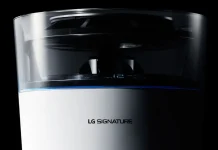Quantum Dots is a technology that was first presented in CES 2015. Samsung claims Quantum Dots are here to make an image on your TV screen better and that’s true. And that’s true, Quantum Dots technology makes an image on TV better, thanks to another type of backlight. Of course, Quantum Dots are used only in high-end TVs, but since the technology was presented in 2015 it became much more widespread, moving down from the high-end TVs to the middle-class TVs as well. No matter if you’re just looking to buy a new TV or already have a TV with Quantum Dots, this article would be useful for you, as it helps to understand not only what is Quantum Dots, but also what are the best screen settings for such TVs.
What is QLED/Quantum Dot
First of all, you should understand that QLED and Quantum Dots are the same things. You should understand that image is ‘creating’ in the same way as it’s created on LCD/LED displays, but the diodes themselves are different. If in LED displays diodes are emitting white light, in QLED TVs, diodes are emitting blue light. Actually, typical LEDs are emitting a blue light as well, but they’re coated with yellow phosphor and that’s why they’re emitting white light.
All of us know about the RGB spectrum, which means red, green, and blue. By mixing these 3 colors, we can get any other color that we can see. However, blue light is the most energy-consuming color, so on QLED TV screens, the first color that’s created is a blue one. Then, TV refracts blue color to a lower energy state to create red or green. Thanks to the blue light, the maximum brightness that can be provided by QLED displays is 4000 nits, while standard LED displays can provide a brightness of only 1000 nits. That’s how QLED screens work. I wouldn’t speak in a lot of details about this technology, because the understanding of QLED technology lies in the dimension of deep-understanding how screens and diodes. There are the key points you should know:
- Quantum dots (QLED) screens are improved LED screens.
- They’ve improved thanks to a different type of light that is emitted by diodes.
- QLED screens’ diodes are emitting blue light, while LED diodes are emitting white light.
- QLED is used in more expensive TVs.
However, don’t forget that Quantum Dots (QLED) is just an advanced LED technology. Yes, this technology is better than a standard LED. But don’t get it wrong, that’s still LED screens, despite Samsung’s marketing efforts.
Should I worry about QLED burn-in?
In fact, any LED TV is prone to burnout, so over time the image can become worse quality. QLED TVs are no exception.
However, you don’t have to worry about that.
Since quantum dot screens are susceptible to burn-in just like any other LED displays, Samsung has issued guidelines for viewing images on a quantum dot TV. This information can be found in the Warranty section, Samsung’s U.S. website. These recommendations are directly related to the possibility of quantum dot screen burn-in and user claims against the manufacturer. Below is an example of a possible screen burnout.
How to protect Samsung QLED TVs against burn-in?
Samsung offers the following recommendations:
- TVs with an aspect ratio (16: 9 aspect ratio of the screen width to height) are primarily designed for viewing widescreen images and full-screen video. Therefore, it isn’t recommended to watch images in other width proportions, such as 4:3.
- Images displayed on QLED TVs must be in 16:9 widescreen format, if the TV supports scaling, you must use this feature when watching 3:4 videos. If you do not use this feature and the TV doesn’t support image scaling, viewing images while maintaining dark lines on the screen should be limited to no more than 15% of your total TV viewing time per week. This means that the TV must show an image with black bars for no more than 15% of the total viewing time.
- In addition, viewing other stationary images and text, such as stock reports, video games, unaltered logo images, viewing websites or computer graphics, photos, and drawings, should also be restricted as described above for all QLED TVs. Displaying any stationary images in excess of the above recommendations may cause uneven aging of the display panels, which may be small but persistent. The screen may display ghosted images. To avoid this, it is recommended to vary the program and images and to use the full screen first to move the images without leaving dark bars, and not to use static images.
Samsung recommends choosing the right formats for watching videos so that the TV screen on quantum dots ages evenly.
What is the life expectancy of a QLED TV?
The lifespan of Samsung QLED TVs varies depending on how you use the TV. Samsung has only provided a likely lifespan for its QLED TVs. According to information from the company, a QLED TV will perform fine for 7-10 years before visual degradation becomes noticeable.
The problem of burnout of screens with quantum dots will soon become very relevant, since large-format QLED TVs began to be produced in 2014, and after several years of use of these TVs, the effect of screen burnout appears. Given the cost of TVs and possible claims, these recommendations are very relevant. And they will help to reflect the claims of new customers regarding the burn-in of QLED TVs.
Is burn in a problem with QLED TVs?
This article was originally written in 2016 and now, as of the beginning of 2019, it seems that Samsung has made great progress in order to prevent burn-in, as in the new TVs such recommendations are missing. However, such recommendations are still good if you want to prolong your QLED TV lifespan for as long as possible.







